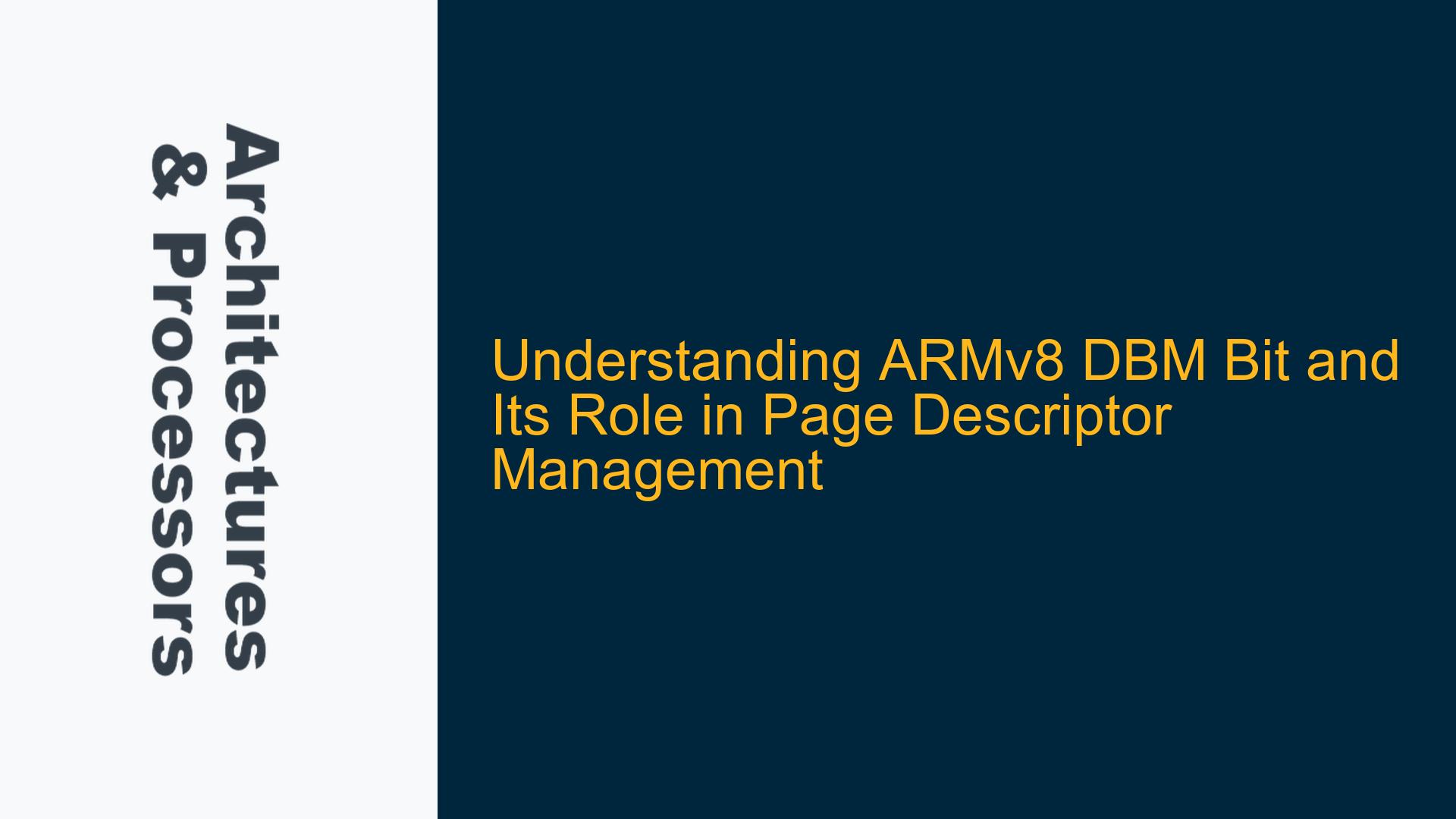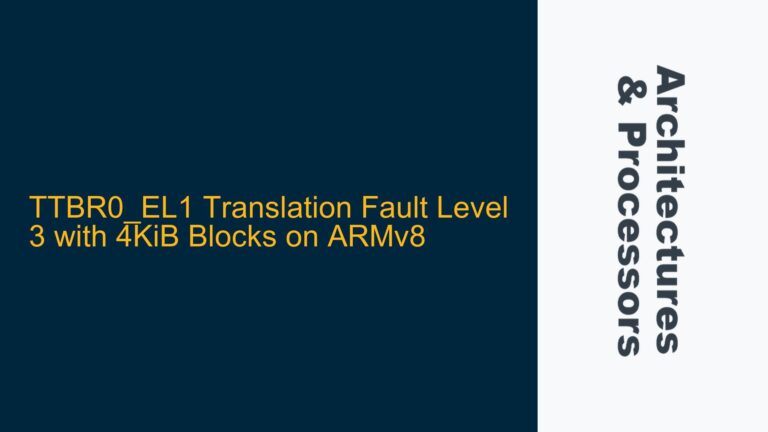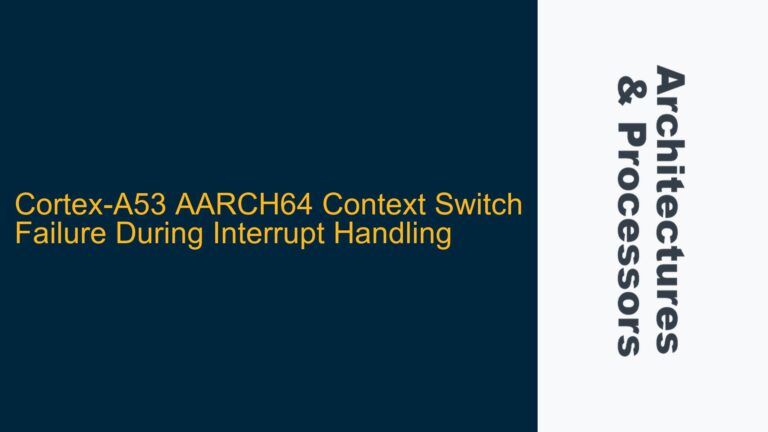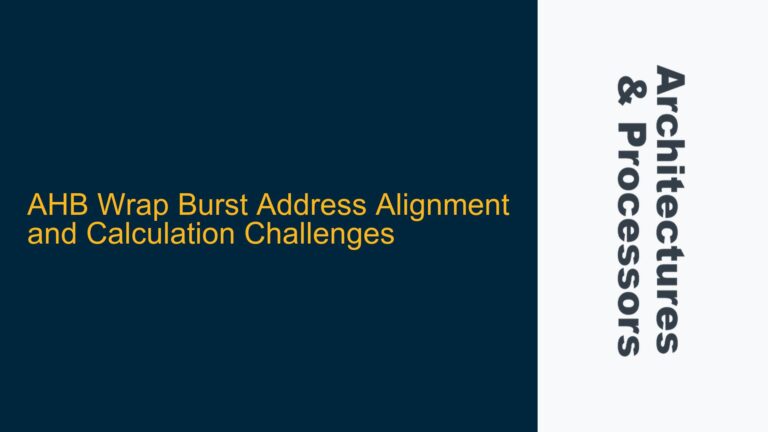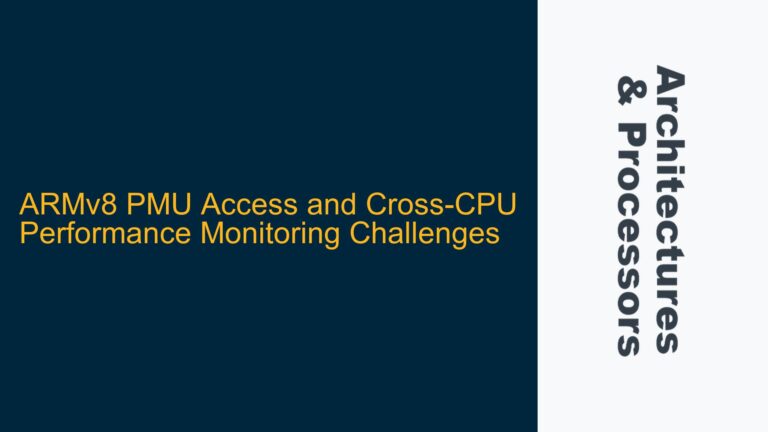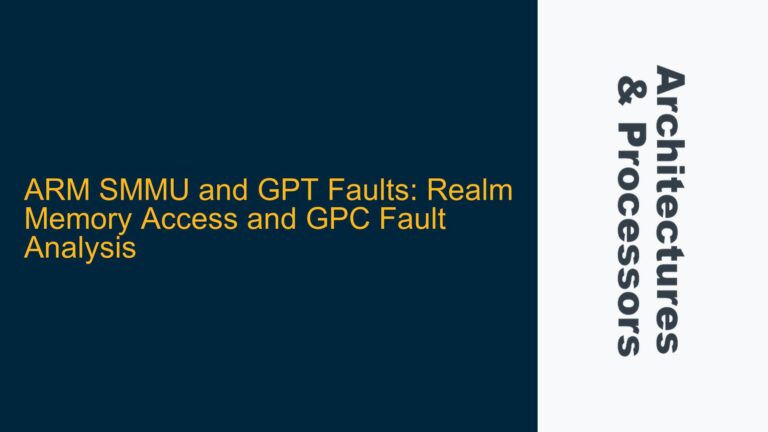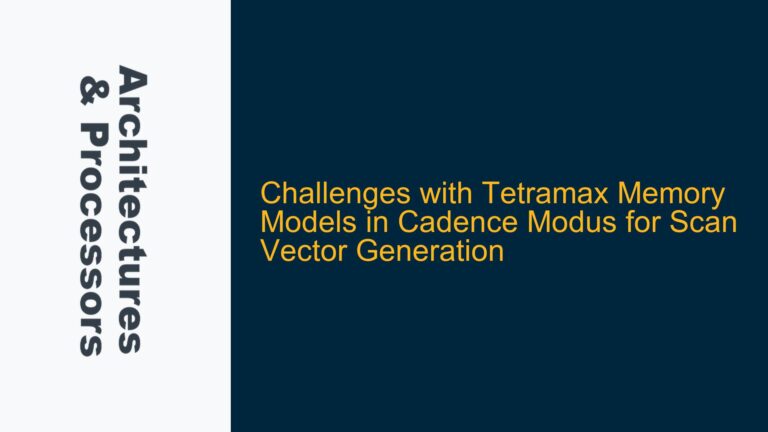ARMv8 DBM Bit Functionality and Misconceptions
The Dirty Bit Modifier (DBM) in ARMv8 architecture is a critical yet often misunderstood feature in the context of memory management and translation table descriptors. The DBM bit is part of the page or block descriptor in the translation tables used by the Memory Management Unit (MMU) to manage virtual-to-physical address translations. Its primary role is to enable hardware-assisted management of the dirty state of memory pages or blocks. A common misconception is that the DBM bit directly indicates whether a page is dirty (i.e., has been written to). However, this interpretation is incorrect and can lead to significant misunderstandings in system design and debugging.
The DBM bit does not directly represent the dirty state of a page. Instead, it serves as a control mechanism for the hardware to manage the Access Permissions (AP) bits dynamically. When DBM is set to 1, the hardware is allowed to modify the AP bits in the descriptor to reflect changes in the page’s state. Specifically, if a page is initially marked as read-only (AP="read-only") and DBM=1, the hardware can automatically update the AP bits to "read-write" upon the first write operation. This mechanism allows the operating system (OS) to track whether a page has been written to without requiring explicit software intervention.
Conversely, when DBM is set to 0, the hardware is not permitted to modify the AP bits. In this case, if a page is marked as read-only and a write operation is attempted, the CPU will generate a permission fault (abort). This behavior ensures that software retains full control over the page’s permissions and dirty state when hardware-assisted management is not desired.
The relationship between the DBM bit and the AP bits is crucial for understanding how the ARMv8 architecture handles memory access permissions and dirty state tracking. The AP bits determine the current access permissions for a page, while the DBM bit determines whether the hardware can modify these permissions dynamically. This interplay is essential for efficient memory management, particularly in systems where the OS needs to track dirty pages for tasks such as memory paging, copy-on-write mechanisms, and cache coherence.
Hardware-Assisted Dirty State Management and Permission Faults
The ARMv8 architecture provides hardware-assisted dirty state management through the DBM bit, which simplifies the task of tracking dirty pages for the OS. When DBM is enabled (DBM=1), the hardware can automatically update the AP bits in the translation table descriptor to reflect changes in the page’s state. This feature is particularly useful in scenarios where the OS needs to maintain a clean/dirty state for pages but wants to avoid the overhead of software-based tracking.
For example, consider a scenario where the OS maps a writable page as read-only (AP="read-only") and sets DBM=1. When a write operation occurs, the hardware detects the mismatch between the requested write access and the current read-only permission. Instead of generating a permission fault, the hardware performs an atomic read-modify-write operation on the translation table descriptor to update the AP bits to "read-write." This update indicates that the page has been written to and is now dirty. The OS can later inspect the AP bits to determine the page’s dirty state without needing to maintain additional metadata.
However, if DBM is disabled (DBM=0), the hardware cannot modify the AP bits. In this case, any attempt to write to a page marked as read-only will result in a permission fault. This behavior ensures that software retains full control over the page’s permissions and dirty state. For instance, if the OS sets AP="read-write" and DBM=0, the page will remain writable, and no permission fault will occur on write operations. However, the OS must explicitly manage the dirty state through software mechanisms, as the hardware will not update the AP bits automatically.
The interaction between the DBM bit and the AP bits also has implications for system performance and reliability. Enabling hardware-assisted dirty state management can reduce the overhead associated with software-based tracking, particularly in systems with large memory footprints. However, it also introduces additional complexity in the memory management logic, as the OS must account for the dynamic updates to the AP bits. Disabling DBM simplifies the memory management logic but places the burden of dirty state tracking entirely on the software.
Implementing DBM Bit Management in ARMv8 Systems
To effectively implement and troubleshoot systems that utilize the DBM bit, developers must understand the nuances of its behavior and its interaction with the AP bits. The following steps outline a systematic approach to managing the DBM bit and addressing common issues:
-
Initialization of Translation Table Descriptors: When setting up translation tables, ensure that the DBM bit is configured correctly based on the desired memory management strategy. For pages that require hardware-assisted dirty state tracking, set DBM=1 and AP="read-only." For pages that require software-managed permissions, set DBM=0 and configure the AP bits accordingly.
-
Handling Permission Faults: If DBM=0 and a write operation is attempted on a read-only page, the CPU will generate a permission fault. Implement a fault handler to manage these exceptions and determine the appropriate response. This may involve updating the page’s permissions, logging the fault for debugging purposes, or terminating the offending process.
-
Inspecting AP Bits for Dirty State: When DBM=1, the OS can inspect the AP bits to determine whether a page has been written to. If the AP bits indicate "read-write," the page is dirty. If they indicate "read-only," the page is clean. Use this information to implement memory management policies such as page replacement, copy-on-write, or cache flushing.
-
Atomicity and Concurrency Considerations: The hardware’s atomic read-modify-write operation on the translation table descriptor ensures that updates to the AP bits are thread-safe. However, software must still consider concurrency issues when accessing or modifying translation tables. Use appropriate synchronization mechanisms to prevent race conditions and ensure consistent memory management.
-
Debugging and Verification: Use debugging tools and techniques to verify the correct behavior of the DBM bit and AP bits. This may include inspecting translation table descriptors, monitoring permission faults, and analyzing memory access patterns. Ensure that the system behaves as expected under various workloads and edge cases.
-
Performance Optimization: Evaluate the performance impact of hardware-assisted dirty state management versus software-based tracking. Consider factors such as the frequency of write operations, the size of the memory footprint, and the overhead of fault handling. Optimize the system’s memory management strategy to balance performance and complexity.
By following these steps, developers can effectively manage the DBM bit and leverage its capabilities to implement efficient and reliable memory management in ARMv8 systems. Understanding the interplay between the DBM bit and the AP bits is essential for optimizing system performance, ensuring correct behavior, and avoiding common pitfalls in embedded systems design.
